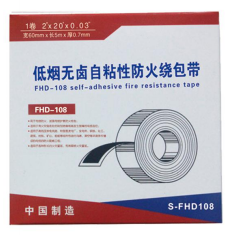The Importance and Applications of Insulating Strips in Modern Technology
Insulating strips play a vital role in various industries and applications, providing essential insulation and protection in electrical and electronic devices. These strips, typically made from materials such as rubber, plastic, or other dielectric substances, are designed to prevent unwanted electrical conduction and ensure the safe operation of equipment. This article delves into the importance of insulating strips, their applications, and the materials used in their production.
Understanding Insulating Strips
At its core, an insulating strip is a thin, elongated piece of insulating material that serves to separate conductive elements within electrical devices. The primary function of these strips is to prevent short circuits, reduce electrical leakage, and enhance the overall safety of the electronic systems in which they are employed. By minimizing the risk of electrical faults, insulating strips contribute significantly to the reliability and longevity of electrical components.
Applications in Various Industries
1. Electronics and Electrical Engineering Insulating strips are ubiquitous in the electronics industry. They are often used to separate wires, terminals, and circuit boards to prevent unintentional contact, which could lead to short-circuiting. They are found in consumer electronics, such as smartphones, tablets, and computers, as well as in larger systems like industrial machinery and automotive electronics.
2. Automotive Industry In the automotive sector, insulating strips are crucial for the safety and efficiency of electrical systems. They are used to insulate wires within the engine, dashboard, and other electrical components. With the increasing complexity of automotive electronics, including advanced driver-assistance systems (ADAS) and electric vehicles (EVs), the demand for effective insulation has never been higher.
3. Construction and Building Services Insulating strips are also important in construction, where they are used to insulate electrical wiring in walls, ceilings, and floors. In residential and commercial buildings, proper insulation helps to reduce energy loss, contributing to greater energy efficiency and sustainability.
4. Telecommunications In telecommunications, insulating strips are used to protect the integrity of data transmission lines and ensure signal quality. These strips are critical in safeguarding against interference and maintaining the performance of communication systems.
insulating strip

5. Aerospace and Defense The aerospace and defense sectors require stringent safety standards for all components, including electrical insulation. Insulating strips designed for high-performance applications must withstand extreme temperatures, pressures, and environmental conditions.
Materials Used in Insulating Strips
The choice of material for insulating strips is crucial, as it determines the effectiveness of insulation in different environments. Some of the commonly used materials include
- Rubber Known for its excellent elasticity and resistance to electricity, rubber insulating strips are widely used due to their affordability and ease of handling.
- Polyethylene (PE) and Polyvinyl Chloride (PVC) These plastic materials are often preferred for their durability and resistance to chemicals and moisture. They are commonly used in both industrial and consumer applications.
- Polyimide For high-temperature applications, polyimide insulating strips are ideal due to their ability to withstand extreme thermal conditions without degrading.
- Fiberglass This material is known for its high strength and thermal insulation properties. Fiberglass strips are often used in situations where additional structural integrity is required.
Conclusion
Insulating strips are an essential component in the modern electrical landscape, offering a simple yet effective means of ensuring safety and functionality across numerous applications. As technology continues to evolve, the demand for reliable insulation solutions will only grow. Whether in consumer electronics, automotive systems, or advanced aerospace applications, the importance of insulating strips cannot be overstated. They not only enhance the safety of electrical devices but also contribute to the overall efficiency and performance of numerous technologies that we rely on every day. As industries innovate and develop new products, the role of insulating strips will remain a cornerstone of electrical safety and design.
-
XIANGFAN Rubber Tape-Ultimate Solutions for All Your Insulation NeedsNewsJun.24,2025
-
XIANGFAN Rubber Tape-Protection for Industrial and Residential ApplicationsNewsJun.24,2025
-
XIANGFAN Rubber Tape: Superior Safety and Sealing for Demanding EnvironmentsNewsJun.24,2025
-
XIANGFAN Rubber Tape: Reliable Solutions for Every Electrical ChallengeNewsJun.24,2025
-
XIANGFAN Electrical & Industrial Tape: Powering Reliability Across IndustriesNewsJun.24,2025
-
XIANGFAN Electrical & Industrial Tape: Excellence in Every ApplicationNewsJun.24,2025
